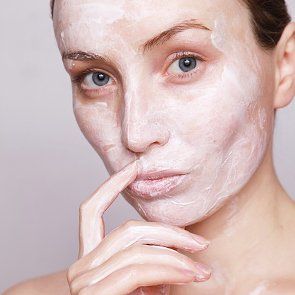What Is Multi-Masking and How to Do It Right?
 Face masks are generally targeted skincare products: there are multiple types of masks, and each of them has a specific purpose, such as cleansing, moisturizing, nourishment, balancing, etc. But which of them should you choose when different areas on your face have different needs? That’s where multi-masking comes in handy.
Face masks are generally targeted skincare products: there are multiple types of masks, and each of them has a specific purpose, such as cleansing, moisturizing, nourishment, balancing, etc. But which of them should you choose when different areas on your face have different needs? That’s where multi-masking comes in handy.Very few people have flawless skin. More often than not, skin can have “problematic” areas that need special attention because of increased oil production, dryness/tightness, blackhead, pimples, or other issues. This is especially true for people with combination skin, who usually have oily skin in the T-zone and dry skin on the cheeks.
The idea behind multi-masking is to give your skin exactly what it needs. For example, if you have oily T-zone, you don’t have to smear cleansing and balancing face masks all over your face, risking to make your cheeks dry and flaky. Or if some parts of your face have gotten flaky and need intensive hydration and nourishment while others don’t, focus on those areas that need some extra TLC.
There are two main multi-masking techniques: zoning and layering. The zoning technique is most commonly associated with multi-masking in general. It means applying different masks to different parts of your face, depending on their specific needs and concerns. You can apply masks either simultaneously (it really helps to save time) or one after another.
The layering technique is less common; it is considered most beneficial for dry skin. The name of the technique speaks for itself: you apply one mask first, and then follow it up with the second mask. The tricky part is to pick the masks that will complement and enhance each other’s effect instead of preventing each other from absorbing.
Beauticians recommend that you apply a creamy mask first and follow it up with a sheet mask. Sheet masks have occlusive properties and therefore help creamy masks penetrate the skin. If you apply two creamy masks, start with the lighter one, give it a few minutes to absorb, and then apply the thicker one.
If you’re thinking about trying multi-masking and want to do it right, here are a few tips that you may find helpful.
Make Sure to Prepare Your Skin First
Multi-masking or not, face masks are most effective post-shower, when your face is clean and your pores are open. Some specialists recommend that you exfoliate first, but this is your choice. If you have dry or sensitive skin or if one of the masks you’re going to apply is a cleansing clay mask with absorbent properties, you can skip exfoliation.
Apply Masks Strategically
Different facial masks have different application time. You should start with masks that need to sit on your face longer and follow them up with the masks that need a shorter amount of time, so that when the time comes to remove them, you can rinse the masks off simultaneously. By the way, the easiest way to apply masks is to use a clean foundation brush; just don’t forget to wash it between applying different masks.
Don’t Go Overboard
Overdoing with any cosmetic product won’t do anything good for your skin. Your face doesn’t really need a dozen different masks at once. Two, three or maximum four masks at a time (plus, optionally, eye and/or lip patches) will be enough. If you’re new to multi-masking, start with tried and tested products, and introduce new masks gradually and carefully.
Breadcrumbs
Filters
- Face
Tags
Related Articles
- Homemade Banana Face Masks, 5 Tips to Get Rid Of and Prevent Blackheads, 6 Homemade Face Masks With Avocado Oil for Dry Skin, 4 Homemade Facial Masks With Aloe Vera Gel